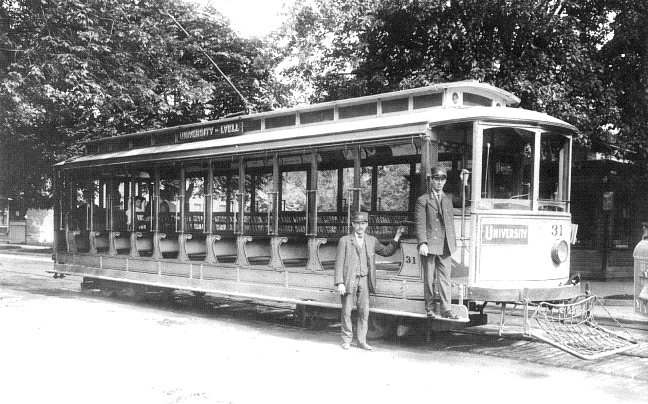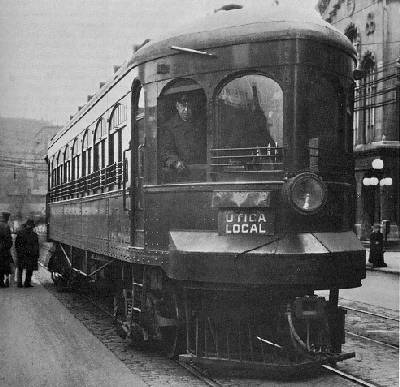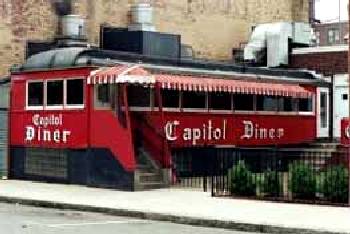G. C. Kuhlman Car CompanyG.C. Kuhlman Company
As did many firms and individuals of the time that did fine carpentry, the family started building horse cars during the 1880s. In 1892, Gustav started his own firm, the G.C. Kuhlman Company, specializing in street railway and interurban vehicles. The business soon outgrew the family shops and into two former car barns at Broadway and Aetna.
The G.C. Kuhlman Car Company was incorporated in 1901, and built a new plant where E. 140th Avenue (now Adams Street) crossed the New York Central railroad tracks in the suburb of Collinwood. In 1904, the G.C. Kuhlman Car Company became a wholly-owned subsidiary of the J.G. Brill Company, another firm concentrating on electrified cars, but cars continued to be built under the Kuhlman name. Gustav Kuhlman remained briefly as General Manager, and continued to keep his hand in at the plant until his death in 1915. In 1906, Kuhlman produced one of the earliest gasoline-powered railcars. It was a 43'-9" eight-wheeled car powered by a 220-hp Chase engine. Built for the New York Central, it reportedly attained speeds as high as 65 mph.
The Encyclopedia of Cleveland History says
By the time of the 1st World War, the automobile was making inroads on city and interurban railways, and this trend accelerated even through the Great Depression. Orders became fewer and fewer, and Kuhlman/Brill had to look for other markets. Besides bus bodies, between 1927 and 1932 Brill/Kuhlman built steel diners (as distinct from dining cars). Doors on both ends of their façades gave the Brill Steel diners a streetcar look.
On 1 February 1931 the G.C. Kuhlman Car Company was reorganized as J.G. Brill of Ohio, but the company couldn’t survive the Great Depression, and was closed 15 April 1932. |


